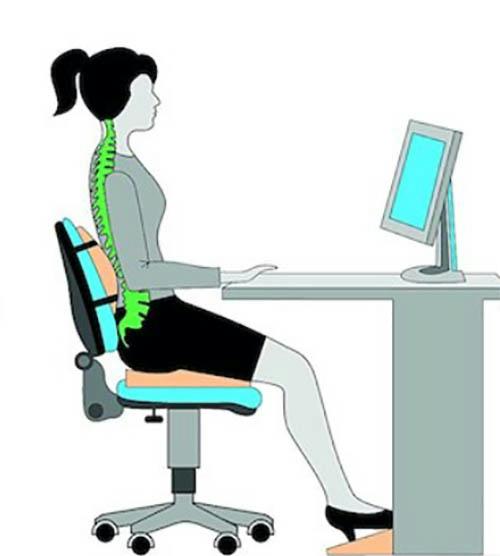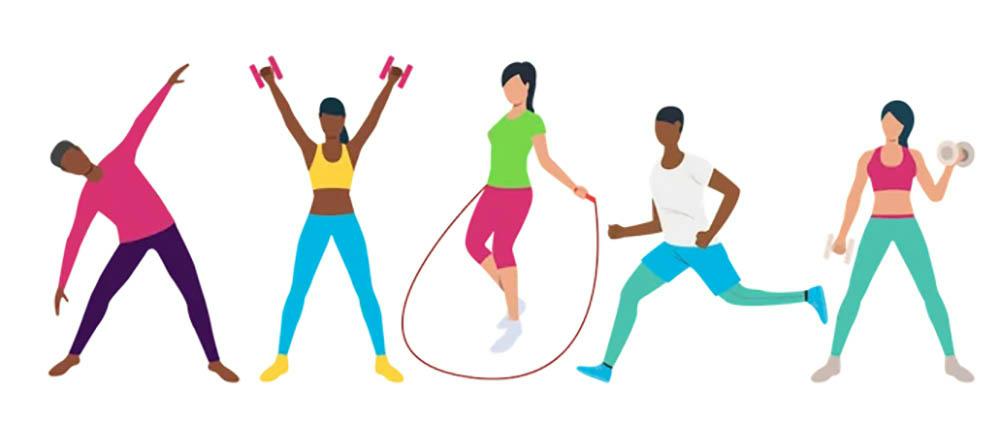We all know someone who has back pain. The CDC found that in 2019 40% of Americans 18 years & older reported suffering from back pain. A study reported that up to 80% of people report low back pain at some point in their life. That means if you work with 10 people at work, 4 of them are likely suffering back pain right now & 8 of them have at some point. And you might be one of them! It can be debilitating or mild, chronic or just hit us for a few weeks, stop us from doing things we love or working, prevent us from playing with our kids or even just sitting at our desk. So how do we get here?
Where it starts…
“I’ve had back pain for years. It started when I was in my 20s after bending down to pick up sticks while doing yard work. Since then I’ve always had pain bending over or sitting & I can’t play pick-up basketball without pain. I do all of it anyway. I don’t want to go to the doctor because it’s not that bad. Sometimes it flares up & I have to take the week off, but then it goes back to normal. It’s just pain. Everyone has back pain. It’s normal.
It’s Not Normal
That’s probably the biggest fallacy when it comes to back pain, “it’s normal.” We think it’s normal because a lot of people we know suffer back pain. They haven’t found a resolution for their pain, so they think there is no solution. So they start telling others who suffer similar pain not to waste their time & money because they won’t find relief either. I’m here to tell you, it’s not normal. Living with pain constantly isn’t normal. There are things you can do to improve it & change your life. Stick with me here to learn.
Habit 1: Tummy Time

When was the last time you laid on your stomach? For 40% of you, you avoid laying on your stomach like the plague. Just like a baby needs “tummy time” to gain neck strength & the posture needed to stand upright, so we need to spend time on our stomach to help our backs. We spend our lives bending forward, or in lumbar flexion. If we don’t reverse that motion & practice lumbar extension, we will likely suffer back pain long term.
Habit 2: Posture
Knock, knock. Who’s there? Your mom reminding you to sit up straight! We all know we should sit up straight, but we forget & the weight of the day sits on our shoulders & pulls us into a bent-over form all day.
1. That’s the fastest way to look like this:

2. Being stuck in this position long-term causes not only back pain, but also neck pain, shoulder pain, regular headaches, hip pain, & more.
The good news? Changing your posture is easy! Set an alarm on your phone every hour during the day. When that alarm goes off, use it as a reminder to sit up straight wherever you are; standing, sitting, walking, running. If you do this 10% more this week than you did last week, you’ll be in 10% less pain.
Habit 3: Sitting with Back Support

We spend a lot of our days sitting. We sit to eat, work, travel, & relax to watch TV at night. The vast majority of our seats don’t have a low back support. They cause us to round our back & sit in a flexed position. This adds stress to the low back & perpetuates low back pain. Adding a small pillow or rolled up towel while sitting can make all the difference. Instead of sitting with a fully flexed spine, you sit with a neutral spine which lets your low back rest & prevents undue stress that causes pain.
Habit 4: Manage Your Stress

It’s true, we hold stress in different parts of our body. The spine is a magnet for this stress. Stress comes in many forms; poor nutrition, a sedentary lifestyle, exercising too much, not feeling physically & emotionally, & emotional stress due to mental health conditions, work, or family problems to name a few. In fact, 37% of people with depression surveyed in a study said they also suffered low back pain. Depending on the stress, there are many management techniques. In Burnout: The Secret to Unlocking the Stress Cycle Emily & Amelia Nagoski talk about some simple suggestions:
- Authentic laughter. 🤣 This includes belly laughs, child giggles, & joy.
- 20 second hugs. ♥️ Find your favorite hugger & feel some good, old fashion human connection.
- Any form of exercise.🚶 Walk for 5 minutes. Do some jumping jacks in place. Stretch for a minute.
- Deep breathing. 😌 Sit, close your eyes, & just take full deep breaths for a minute. 1 minute! We’re not asking for your day here.
- Positive social interaction. ☕ Grab coffee with a friend. See a movie with your partner. Talk about a thought-provoking blog post about back pain with a coworker. 😉
- Cry for 5 minutes. 🥲 This one catches people off guard. We’re not talking about hours of remorseful, grief-filled crying. We’re talking about a short 5 minutes alone to get out the heaviness that’s weighing on you.
- Create. 🎨 Paint, sew, plan a new business structure, reorganize your closet, and cook an amazing meal you like. – “Take your broken heart & turn it into art.” – Carrie Fisher –
It’s been shown that these simple tasks can greatly increase hormones in your body that make you feel better, lower your cardiac risk, improve your wellness, & subsequently improve your back pain.
Habit 5: Regular Exercise

Motion is lotion. The more we exercise regularly, the less likely we are to have pain in our joints, muscles, ligaments, & tendons. Back pain is no exception. It’s the best way to prevent it. It’s also the best way to stay out of back pain if you’ve recovered from an injury & trying to prevent it from coming back. A study found that 40-55% of subjects who didn’t continue an exercise plan after their back pain went away had another injury & more back pain within 1 year. Of people who did continue exercise, only 25-30% suffered reinjury 1 year later. The proof is in the pudding.
Hello! How can we help you?
If you’re trying some of these tactics without luck or you feel you need more direction, reach out here on our website to consult with a doctor of physical therapy. From there we’ll reach out to answer your questions & find how to help you get out of pain & back to active. We help our patients get the “Inside Track” on their rehab!

